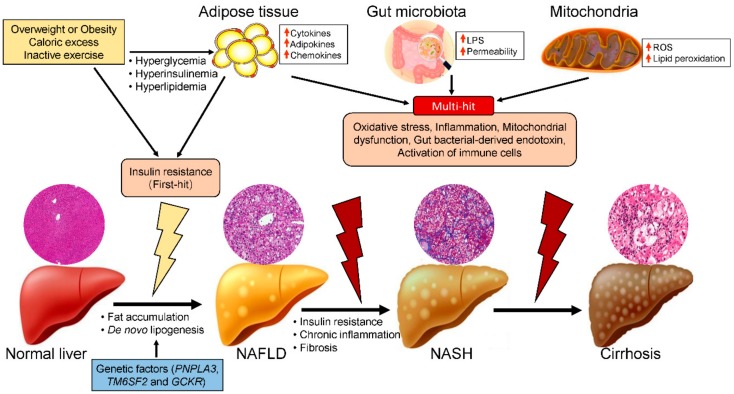Figure 1.
Hypothetical mechanism of NAFLD/NASH progression. Single-nucleotide polymorphisms in several genes—including those encoding patatin-like phospholipase domain-containing 3 (PNPLA3), transmembrane 6 superfamily 2 (TM6SF2), and glucokinase regulatory protein (GCKR)—play important roles in the pathogenesis of NAFLD. Excess caloric consumption and/or physical inactivity induce hyperglycemia, hyperinsulinemia, and high levels of proinflammatory factors, leading to insulin resistance (first hit), and subsequently simple fatty liver (NAFLD). This is followed by other hits, including oxidative stress, chronic inflammation, and the activation of immune cells due to proinflammatory cytokines, the gut microbiota, and mitochondrial dysfunction. These factors cause simple fatty liver to deteriorate to steatohepatitis (NASH) and ultimately hepatic cirrhosis.

